
We’re going to step back a little farther in time for this receiver. This Harman Kardon Festival D-1100 was made long before the days of monster receivers with brushed aluminum faceplates and features ad nauseum. This was made back in the days of simplicity and function. In fact, this D-1100 was the successor to the D-1000 which has its own place in audio history. The D-1000 was designed by Bernard Kardon who, along with Sidney Harman, formed Harman Kardon when they both left the David Bogen company in the early 1950’s. The D-1000 debuted in 1954 and was essentially the very first compact integrated receiver. It incorporated a tuner, amplifier and component control all in a compact chassis. This design led to other manufacturers following the same design path. Integrated receivers had been born and they were set to dominate the audio landscape for years to come.
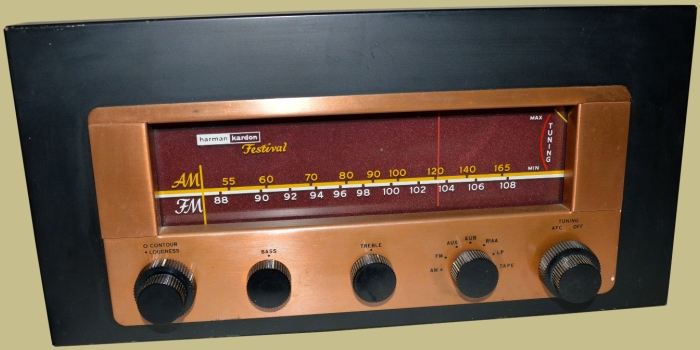
After the D-1000 came the D-1100 which is seen here. It was offered around 1956 and retailed for about $200.00.It also has the trademark copper plated chassis with a copper and black color scheme for panels and enclosures.
As you can see the D-1100 has AM and FM bands as well as an analog tuning meter at the right side of the tuning dial. It has bass, treble, and loudness controls and puts out 30 watts. It is pre stereo so has only mono output. Of course, Harman Kardon produced the first stereo receiver just a couple years later with the TA230.
The input selector has a couple interesting settings in EUR and RIAA. RIAA equalization on LP’s was standardized in 1954 so many owners of the D-1100 would have records that were not RIAA eq’d so they would need the ability to change settings.
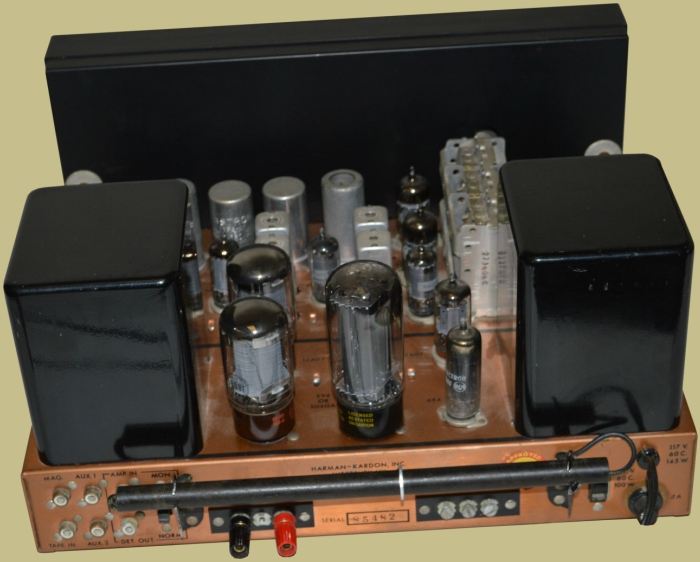
The Harman Kardon Festival D-1100 has two big transformers and the following 16 tubes:
- 6U8
- 12AT7 x 2
- 6BE6
- 6BA6 x 2
- 6AU6 x 2
- 6AL5
- 12AU7 x 3
- 5881 x 2
- 6X4
- 5U4GA
As is typical of the older tube receivers it has point to point wiring and obviously no circuit boards.
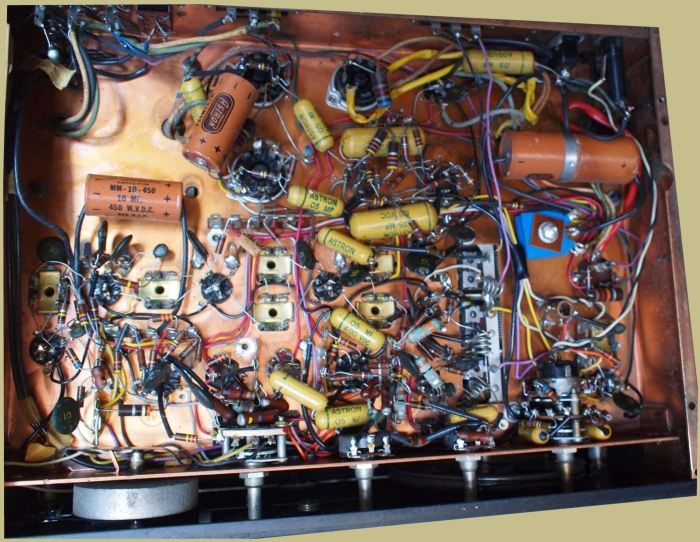
Harman Kardon played a significant role in audio history and the D-1100 fits in to that history very well. It is very popular amongst collectors because it is an early representative of the integrated receiver as well as a tube driven unit. Many collectors prefer tubes over solid state. All the early Harman Kardon units are in high demand which translates into fairly high prices. Of course, most of them will need some work given their age if they haven’t been restored at some point.
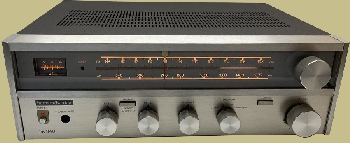
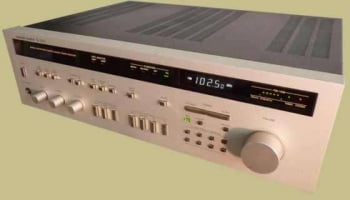
The 5881 power tubes put out a maximum of 23 watts.
The 5881 is rated for 23 watts EACH. It is a push-pull circuit, which in the D-1100 is configured for 30 watts total rated output.
The 5881 is the exact equivalent of a 6L6WGB. The 5881 is a ruggedized tube, designed for military purposes, so more than likely HK was taking advantage of a military surplus of 5881s with the D1000 and D1100.
The D1000 was rated at 20 watts output. Other differences between the D1000 and the D1100 besides upgraded output transformer are outboard mounted AM antenna (a dubious improvement), a tuning meter, and the addition of a Tape input. They otherwise look identical.
Thanks for your testimony Mr Sanderson. Great to have intelligence from the classic era.